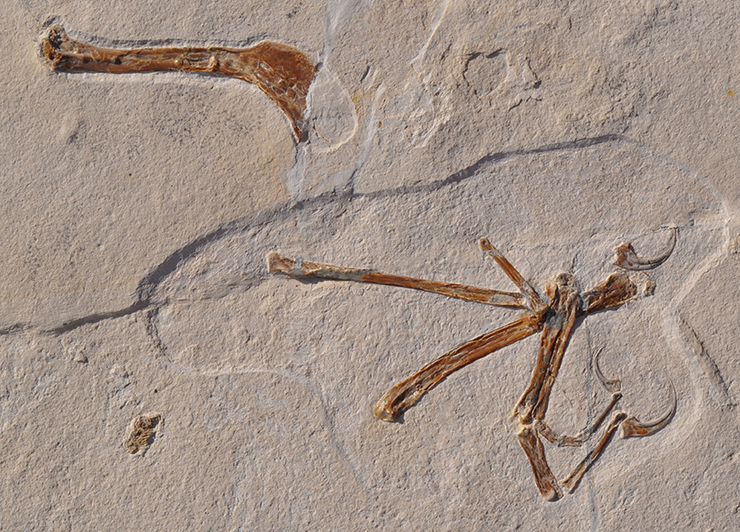First Birds: Archaeopteryx Gets Company
Bavarian State Collection for Palaeontology and Geology
Researchers at the Bavarian State Collection of Paleontology and Geology (SNSB-BSPG) and LMU Munich describe a hitherto unknown bird from the late Jurassic period. It is the second bird capable of flight, after the famous Archaeopteryx, to be identified from this era.

Archaeopteryx’s throne is tottering. Since the discovery of the first fossil of the primal bird in 1861, it had been considered the only bird from the Jurassic geological period. Today’s birds are thought to be direct descendants of carnivorous dinosaurs, with Archaeopteryx representing the oldest known flying representative of this lineage. All of the specimens that have been found up to now come from the region of the Solnhofen Archipelago, which during the Jurassic era spanned across what is today the Altmühl Valley, in the area between Pappenheim and Regensburg. Archaeopteryx lived here in a landscape of reef islands about 150 million years ago. A team led by Prof. Oliver Rauhut has taxonomically identified a bird unknown until now: Alcmonavis poeschli, the second bird from the era identified as capable of flight. “This suggests that the diversity of birds in the late Jurassic era was greater than previously thought,” says Rauhut, paleontologist at the Department of Earth and Environmental Sciences as well as the Bavarian State Collection of Paleontology and Geology (SNSB-BSPG).
Only a wing of Alcmonavis poeschli was discovered. “At first, we assumed that this was another specimen of Archaeopteryx. There are similarities, but after detailed comparisons with Archaeopteryx and other, geologically younger birds, its fossil remains suggested that we were dealing with a somewhat more derived bird,” says Rauhut. According to the team’s taxonomic studies, which are currently featured in the scientific journal eLife, Alcmonavis poeschli was not merely somewhat larger than Archaeopteryx; apparently it could also fly better. “The wing muscles indicate a greater capacity for flying,” says Rauhut. Alcmonavis poeschli exhibits numerous traits lacking in Archaeopteryx but present in more recent birds. This suggests that it was adapted better to active, flapping flight.
The discovery of Alcmonavis poeschli has implications for the debate over whether active flapping birds arose from gliding birds. “Its adaptation shows that the evolution of flight must have progressed relatively quickly,” says Dr. Christian Foth from the University of Fribourg (Switzerland), one of the co-authors of the study.
The bird now being described for the first time derives its name from the old Celtic word for the river Altmühl, Alcmona, and its discoverer Roland Pöschl, who leads the excavation at the Schaudiberg quarry close to Mörnsheim. A fossil of Archaeopteryx was also discovered in the same unit of limestones. The two primal birds thus apparently lived at the same time in what was then a subtropical lagoon landscape in southern Germany.
Publication:
Rauhut, OMW., Tischlinger, H, Foth, C (2019) A non-archaeopterygid avialan theropod from the Late Jurassic of southern Germany. – eLife https://doi.org/10.7554/eLife.43789.001
Contact:
Prof. Dr. Oliver Rauhut
Bavarian State Collection for Palaeontology and Geology (SNSB-BSPG) and
Department of Earth and Environmental Sciences LMU
Tel.: +49 (0)89 2180 6645
E-Mail: rauhut@snsb.de



